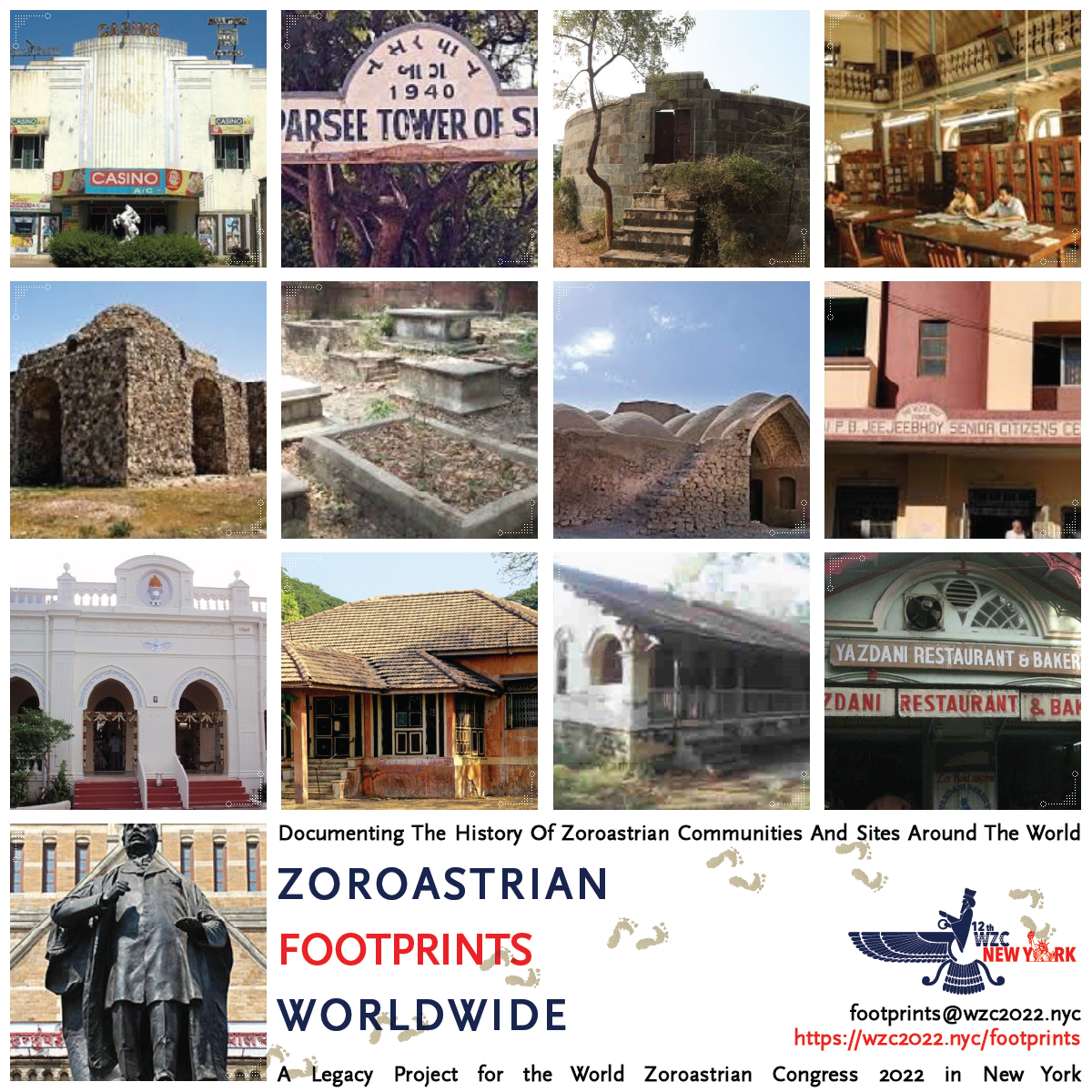Zoroastrian Footprints Worldwide
Documenting the History of Zoroastrian Communities and Sites around the world
A Legacy Project for the World Zoroastrian Congress 2022 in New York
BASIS:
The population of Zoroastrians in India and Pakistan has been steadily declining for decades and whereas there are attempts to stem the tide, it appears that the steady decline will continue. According to the Federation of Parsi Zoroastrian Anjumans of India (FPZAI) in more than 50 of the 80 towns in the country where Parsis once lived, the anjumans or associations are defunct. The population in Iran is relatively smaller and declining rapidly.
At the same time, the population outside the mother countries, in the Diaspora, shows signs of steadily increasing. There has been a steady exodus of young Zoroastrians from India and Pakistan to other countries, primarily the United States, Canada, Australia, and the UK. Zoroastrians in the Diaspora continue to establish many new regional associations.
It is vital and of historic importance to capture this moment in history.

OBJECTIVE:
This Legacy Project, “Zoroastrian Footprints Worldwide” aims to:
- Document a brief history of every Zoroastrian Community worldwide.
- Document through photographs all Zoroastrian related buildings/structures within these communities including the history of these structures.
- Document regions that used to have a Zoroastrian presence but no longer do (Defunct anjumans)
PROJECT:
The goal is to contact every Zoroastrian community (city/town/village) worldwide and request them to provide:
- A brief history of their community.
- For example:
- Who were the first Zoroastrians to settle?
- Where did they come from?
- Why did they come?
- What kind of trade or occupations?
- Growth and decline of population. Causes? Timeframe?
- Current status of the community.
- Any historically significant event?
- Photographs and brief history of Zoroastrian established institutions and structures.
- Atash Behram, Dar-e-Meher (Dadghas, Aadarian)
- Tower of Silence / Burial grounds
- Dharamsala (rest house
- Library
- Educational Institutions
- Professional Institutions – Science, Medical, Technology, Arts, Entertainment
- Senior citizen centers
- Residential baugs/colonies
- Hotels, Restaurants
- Zoroastrian street names
- Zoroastrian statues
PROCESS:
This project will involve the participation of volunteers in each community. We will solicitate community leaders to help coordinate the effort in their respective regions.
A user-friendly website will be provided for the input of the collected data.
The final product will be a world class interactive multimedia portal that will be unveiled at the 12th WZC in New York and shall be accessible online on the internet.
Resultant datasets will also be added to Google Maps, Wikipedia and other online opensource databases.
This Project/Study will be showcased at the World Zoroastrian Congress as a program session and will include an exclusive exhibit.
